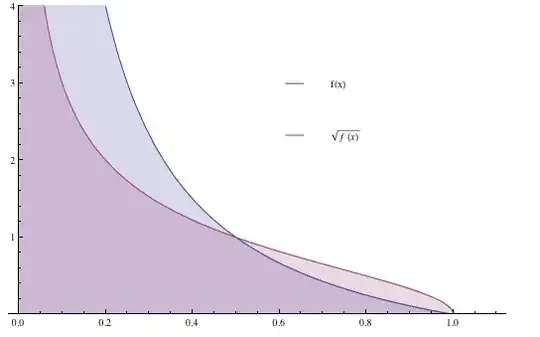I found myself intrigued by the result of the definite integrals of $\frac{1-x}{x}$ and $\sqrt{\frac{1-x}{x}}$ respectively. Both functions are seemingly similar, with vertical asymptotes at $x=0$. However the area bounded between the two and the $x$-axis for $x=[0,1]$ is clearly different. Let $f(x)=\frac{1-x}{x}$:

and so we have: $$ \begin{align} &\int\limits^{1}_{0}f(x)\,dx=\infty\\ &\int\limits^{1}_{0}f(x)^{1/2}\,dx=\frac{\pi}{2} \end{align} $$
Now, since $\displaystyle\lim\limits_{x\to0}\,f(x)=\lim\limits_{x\to0}\,f(x)^{1/2}=\infty$ shouldn't the two both evaluate to infinity? Even though it is clear that $\int\limits^{1}_{0}f(x)^{1/2}\,dx$ will be less than $\int\limits^{1}_{0}f(x)\,dx$, how can that be that one evaluates to infinity while the other to merely $\approx1.57\!\!\ldots$?
Has this something to do with this? Or perhaps with the fact that $\ln{x}$, which forms a part of the indefinite integral for $f(x)$, isn't defined for $0$?